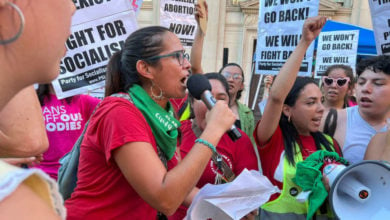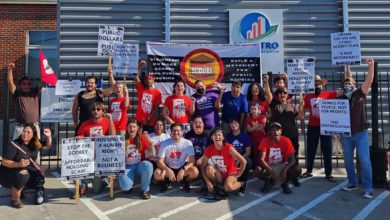“It is incrementally affecting the 3rd Ward (an historic African American neighborhood). The University of Houston is trying to buy up as much property as they can in the 3rd Ward which they have been doing over the last year,” said rental car service worker, student, writer and activist from Houston, Tx., Brant Roberts, in a discussion with Liberation News on his recent essay published in Threshold Magazine.
“From people I have been talking to, they want to take over the property and build resident housing for the college,” explained Roberts.
Houston is now the fourth largest city in the U.S. and fast coming up to surpass Chicago based on population.
“In downtown and in midtown, there are highly secured apartment complexes and all around you’ll find there are homeless and those who need help and can’t get help at all. A lot of Black people are trying to get enough change to get on the bus with wealthy white people riding by on bicycles,” observed Roberts.
Urban food deserts: a recipe for health disparities
“People have a situation where they worked 12 hours all day and for minimum wage and you get home and don’t have any food in the fridge—it’s really overwhelming,” explains Roberts.
“This has led to devastating health problems in these communities, primarily for those who cannot leave their neighborhoods to purchase healthy foods on a regular basis.”
But the history has to do with Big Oil, explains Roberts, in his essay on the history on the current gentrification drive:
“Houston, the “Energy Capital of the world,” is home to several of the world’s most prosperous petroleum and natural resource extraction corporations including Halliburton, National Oilwell Varco, Conoco Phillips, and Baker Hughes. These corporations play a major role in employment, city funding (infrastructure through local taxes), funding the Museum of Fine Arts, and the overall circulation of capital in Houston,” wrote Roberts.
But the changes in oil prices moved the Houston ruling class and their government to encourage other industry to sustain the city.
Roberts’ essay continues: “Since the 1986 Oil Crash, the city of Houston has made strong attempts to diversify its economy, resulting in the expansion of the largest medical district in the world and the opening of more financial institutions within the city limits.This has decreased the city’s economic reliance on the strength of the petroleum industry, and increased the city’s reliance on the strength of the consistent medical industry.”
Despite this redirection of capital, Roberts elaborates that Houston “is becoming one of the most unequal cities in the nation in which to live.“
The liberal-appearing local government touted by the media as a friend of the people has in fact managed the conversion of the city in 22 tax zones.
“These tax zones influence which neighborhoods feel the wrath of gentrification the most and to what degree they feel it,” explains Roberts.
“One cannot fully understand the process of gentrification in Houston without understanding each neighborhood both inside and outside the 610 Loop. For instance, in the historically LGBTQIA friendly district of Montrose, few places remain affordable for working class people. Montrose was once a safer space to which LGBT youth could turn in times of crisis but has now become one of the fastest gentrifying neighborhoods in the city. Many in the LGBT community have found themselves in vulnerable or socially compromising positions as a result,” concludes Roberts in this example.
“There are upwards of 50 different neighborhoods in Houston alone that are feeling the effects of gentrification. Each of these neighborhoods is divided along economic, cultural, and geographical lines.”
Another example is outside the Inner Loop along Route 10 in Westchase where there is a significant African American and African
population—predominantly Nigerian—that local developers have their eye on to “upgrade its infrastructure to handle the surge, which has helped make for a seamless transition from a suburban outlier to a business mecca,” according to the Houston Business Journal.
Pockets of struggle with the potential of greater fightback
“Within the past two years, gentrification has shown its ugly face outside of the 610 loop in Gulfton, where residents have been resisting and organizing against rent hikes. There are upwards of 50 different neighborhoods in Houston alone that are feeling the effects of gentrification.
“The landlords in Gulfton, the area where there is is highest portion of immigrants, are pushing people out. The organization in the leadership in this area is called the South West Defense Network,” according to Roberts.
“They have won a few times. They are cool people out there,” said Roberts of some of the initiators in the struggle to push back gentrification that is targeting immigrant and other oppressed areas of the city.
The last word has not been spoken on gentrification in Houston, but those involved in challenging big business and the landlords see a great potential to win back the city for the people.





